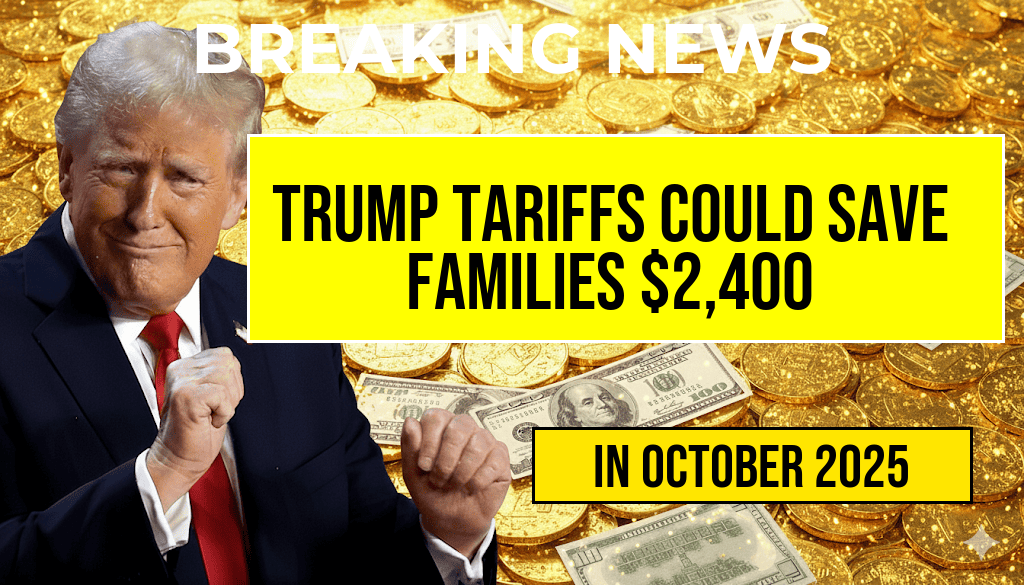Recent discussions surrounding Trump tariffs have focused on their potential to provide unexpected financial relief for American families. While often criticized for raising the prices of imported goods, some economic analyses suggest that these tariffs could indirectly lead to significant savings—up to $2,400 annually per household—through a phenomenon that experts are calling the “Turbulence Tax.” This term describes the less obvious economic ripple effects that result from tariff-induced market shifts, which may reduce certain consumer costs and encourage domestic manufacturing. As policymakers and consumers navigate this complex landscape, understanding the nuanced impacts of tariffs becomes essential for assessing the true cost and benefit of trade policies.
The Mechanics of the ‘Turbulence Tax’
Tariffs as Market Disruptors
Trade tariffs are taxes imposed on imported goods, typically intended to protect domestic industries or retaliate against unfair trade practices. Although their immediate effect tends to increase the cost of foreign products, the broader economic impact can sometimes favor domestic consumers. The “Turbulence Tax” refers to the chain reaction that occurs when tariffs prompt shifts in supply chains, pricing strategies, and consumer behavior.
How It Translates to Household Savings
- Reduced reliance on foreign imports: Higher tariffs make imported goods more expensive, encouraging consumers and businesses to source domestically, which can stabilize domestic prices over time.
- Stimulated domestic production: Increased local manufacturing can lead to more competitive pricing and innovation, ultimately lowering costs for consumers.
- Lower consumer prices in specific sectors: While some goods cost more upfront, others—such as certain agricultural or industrial products—may see price reductions due to increased domestic supply and demand adjustments.
Empirical Evidence and Economic Models
Estimating Savings for the Average Family
Economists have applied various models to estimate how tariffs influence household budgets. A recent analysis suggests that, under certain conditions, households could save approximately $2,400 annually. These savings accrue mainly from decreased prices in sectors where domestic production ramps up as a response to tariff policies. For example, if tariffs encourage U.S. companies to produce more goods domestically, the resulting competition can lead to lower retail prices.
Case Studies and Real-World Examples
During the Trump administration, several industries experienced shifts attributable to tariffs. The steel and aluminum sectors, for example, saw increased domestic investment, which contributed to stabilizing or reducing prices for related manufacturing materials. Similarly, some agricultural exports benefited from targeted tariffs, opening new markets and stabilizing prices for American farmers. These shifts, while sometimes contentious, demonstrate how tariffs can produce ripple effects that benefit consumers indirectly.
Potential Drawbacks and Criticisms
Higher Costs for Certain Goods
Despite the potential savings, tariffs often lead to increased costs for imported goods, which can impact household budgets—particularly for items like electronics, clothing, and vehicles. Consumers may face higher prices upfront, offsetting some of the savings from domestic market adjustments.
Trade Tensions and Global Supply Chains
Tariffs can provoke retaliatory actions from trading partners, leading to trade wars that disrupt global supply chains. Such disruptions can cause shortages and price volatility, negatively impacting consumers and businesses alike.
Balancing the Benefits and Risks
| Positive Outcomes | Challenges |
|---|---|
| Estimated annual household savings of up to $2,400 | Possible increases in prices for imported goods |
| Stimulation of domestic manufacturing and job creation | Risk of trade retaliations leading to market instability |
| Enhanced supply chain resilience within the U.S. | Short-term market turbulence affecting prices and availability |
Looking Ahead: Policy Implications and Public Perception
As debates continue over trade policies, understanding the hidden benefits of tariffs, like potential household savings, remains crucial. Policymakers must weigh these advantages against possible downsides, including inflation and international trade tensions. For consumers, awareness of how tariffs influence market dynamics can inform purchasing decisions and expectations.
For further insights into trade policy impacts and economic analysis, reputable sources such as Wikipedia’s trade policy overview and Forbes’ analysis on tariffs and consumer benefits provide valuable context and data. Understanding the nuanced effects of tariffs can help shape informed opinions and policies that balance economic growth with consumer protection.
Frequently Asked Questions
What are the main benefits of the ‘Turbulence Tax’ as explained in the article?
The article explains that the ‘Turbulence Tax’, implemented through Trump tariffs, may lead to significant savings for families, potentially saving them up to $2,400 annually. These tariffs can help protect domestic industries, boost local employment, and reduce the cost of certain goods.
How do tariffs potentially save families money according to the article?
The article highlights that tariffs on imported goods can encourage consumers to buy domestically produced items, which may be cheaper or of higher quality, leading to cost savings for families over time.
What is the ‘Turbulence Tax,’ and why is it considered beneficial?
The ‘Turbulence Tax’ is a colloquial term for the tariffs introduced under the Trump administration. It is considered beneficial because it aims to protect American industries, create jobs, and ultimately reduce costs for consumers.
Are there any potential downsides to the tariffs mentioned in the article?
While the article focuses on savings, it also notes that tariffs can sometimes lead to higher prices for certain imported goods and potential trade tensions. However, the overall benefit to families through savings is emphasized as outweighing these concerns.
How can families maximize the savings discussed in the article?
Families can maximize savings by buying domestically produced goods, supporting local industries, and staying informed about tariff-related price changes to make cost-effective purchasing decisions.

Leave a Reply